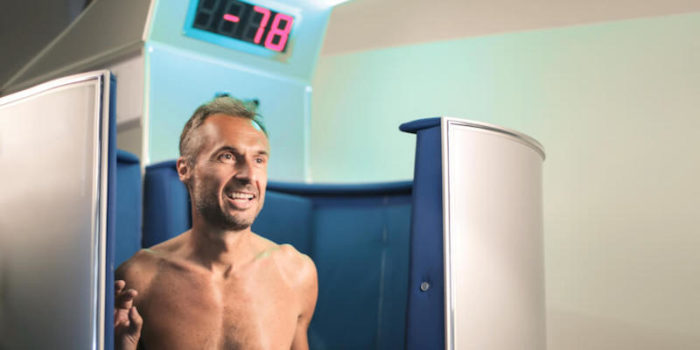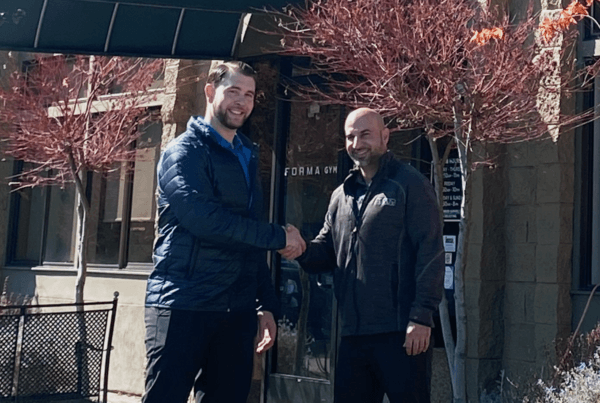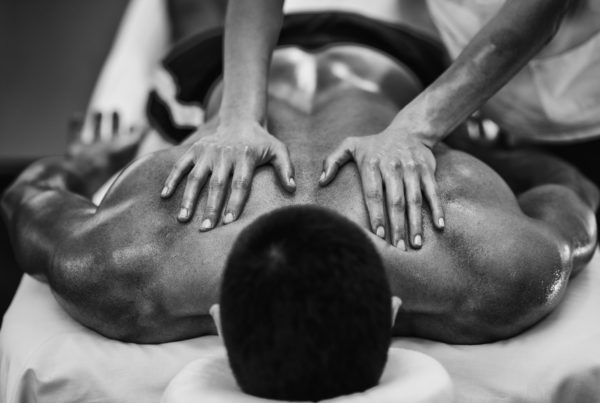The first thing some people think of when they’re new to the idea of whole-body cryotherapy is, “Brrrr!” In actuality, the intention of a two- to three-minute cryotherapy session is to heal and rejuvenate; to relax and to repair injury; to move blood flow to the areas that need it most; or even to provide a burst of energy before a workout.
In fact, cryotherapy is an elemental part of comprehensive wellness. And Forma Gym in Walnut Creek has a complete, whole-body Cryotherapy Wellness Studio.
Let me explain. Exercising as part of a training regimen ultimately increases muscle tone and strength. But the recovery stage after a workout is where most of the muscle-building happens. Someone who doesn’t recover properly, either with rest, stretching, nutrition, massage or other forms of therapy, is more prone to fatigue and injury.
The general idea of localized cryotherapy – or “cold therapy” – came about when the Greeks and Egyptians began using cold as a painkiller and anti-inflammatory. Whole-body cryotherapy dates only to 1978, when a Japanese rheumatologist discovered that, whole-body exposure to cold, via ice bath, could reduce pain and inflammation for people with rheumatoid arthritis.
More effective – and comfortable – than ice baths
Fortunately, that rheumatologist, Dr. Toshiro Yamaguchi, continued his research. By 1980, Yamaguchi and his team realized that brief, rapid exposure to very cold air was more effective than ice baths.
Put simply, nitrogen gas cryotherapy is faster and colder. Cold nitrogen gas (-135°to -200°F ) can reduce the skin’s temperature to 32°F very quickly, but an ice bath might take 20 minutes and can only reduce the skin’s temperature to about 40°F.
In addition, liquid penetrates the skin, meaning that an ice bath can cause muscle tissues to stiffen too much, leaving them immobile until several minutes after you emerge from the water and stop shivering. Controlled exposure to nitrogen gas does not cause this lingering chill and stiffness.
Post-workout and pain management from cryotherapy: How it works
For the most part, cryotherapy is used for pain management. Your body’s natural reaction to extreme cold temperatures is the “fight or flight” reaction. Therefore, when exposed to sudden, cold temperatures, the skin signals to the brain that the body’s vital organs need protecting.
Very quickly, the brain enters “fight-or-flight” mode, triggering blood flow to all the essential organs. When the blood is drawn away from the rest of the body into its core, the inflammation of injured areas also reduces.
After a two- or three- minute session, the blood that returns to the extremities is full of oxygen and nutrients, helping repair and strengthen the body, starting with the areas that are most injured.
The endorphin rush of cryotherapy – either for injury treatment or after a workout – is phenomenal. I’ve seen it do wonders for people with low back or shoulder or knee problems. I’ve also seen how it reduces muscle fatigue and can even make people feel happier afterwards.
While taking an ice bath before a workout is never advised, you can use cryotherapy for a pre-workout energy boost. I’ve seen people use it as a safe way to get that “pumped” feeling prior to a workout.
Understanding the experience: Controlled, safe and private
After people understand how whole-body cryotherapy works, their next questions are usually about safety and modesty. Fear not. Although you’ll be nearly naked during your session, we’ve got you covered:
-
-
- Before entering the octagonal cryotherapy chamber, you’ll be escorted to a changing room. There, you’ll remove any jewelry or accessories.
- You will have the option to remove all of your clothing or to wear a dry bathing suit.
- You’ll be given socks or boots and gloves to wear (men will also cover the penis).
- Your dressing room opens directly into the cryotherapy chamber, which you enter wearing a robe, with your head remaining above the top of the chamber at all times.
- Your certified cryotherapist at Forma Gym will be waiting outside the chamber and can only see your face and head.
- You’ll hand your robe to your cryotherapist before starting the session.
- During your first session, we may start at a higher temperature (-135° to -165°F as opposed to -200°F), just to get you used to the idea of cold therapy. Later, you can try lower temperatures.
- Your cryotherapist will remain in the room outside the chamber and will speak to you and to gauge how you’re doing. It’s amazing how quickly two or three minutes pass. Afterwards, you will wrap up in your robe again and return privately to your changing room.
-
How often should I go?
The frequency of whole-body cryotherapy sessions depends on the individual and their reason(s) for using cryotherapy. For people who are using cryotherapy to recover from injury or reduce pain, I typically recommend two sessions on two consecutive days followed by weekly sessions as needed or desired.
The positive effects kick in much more quickly when your body knows what to expect. You can think of the first two consecutive sessions as “warming up” your brain and body to the idea of cold therapy.
A three-minute session can have such healing powers that you actually gain back time and productivity.
Visit Forma Gym Walnut Creek and give it a try! We’re sure the recovery benefits will leave you feeling like new.



